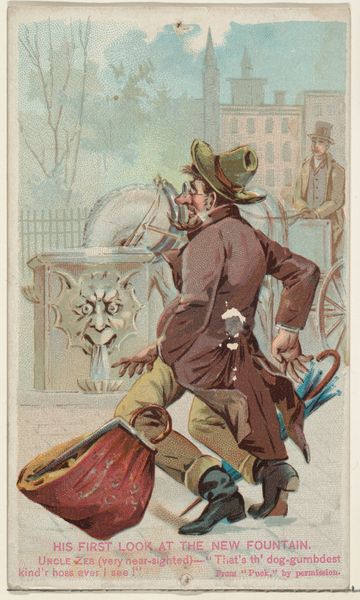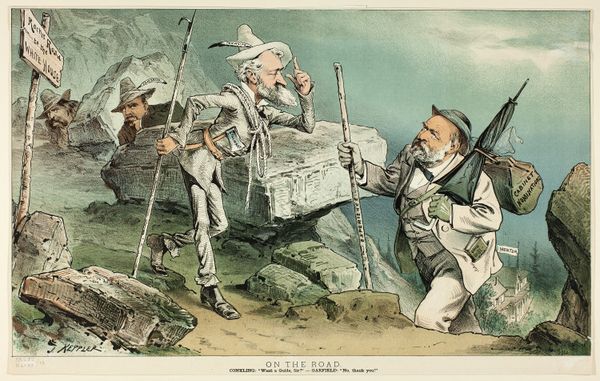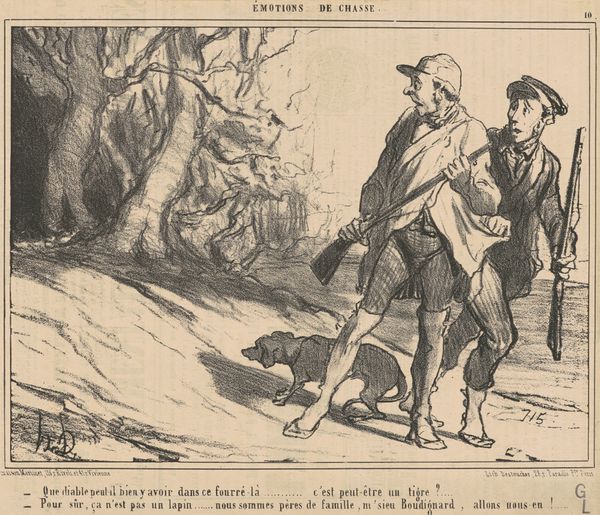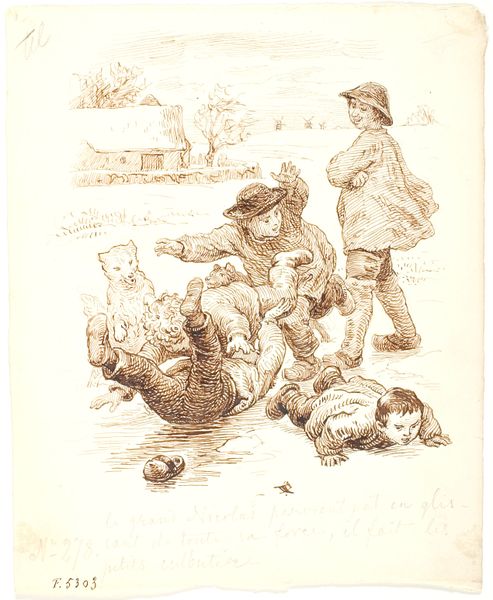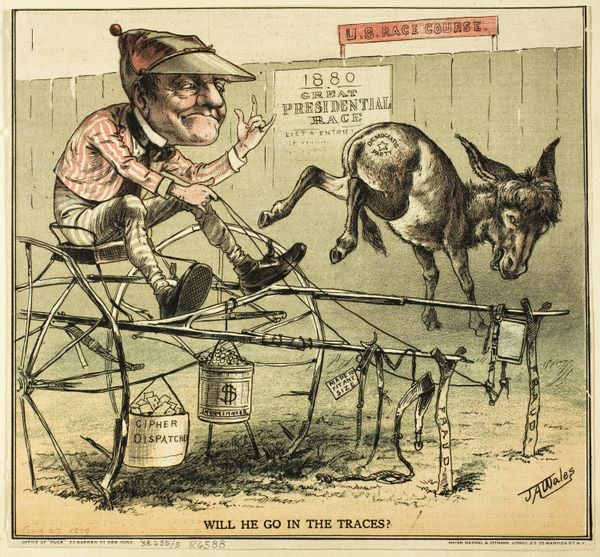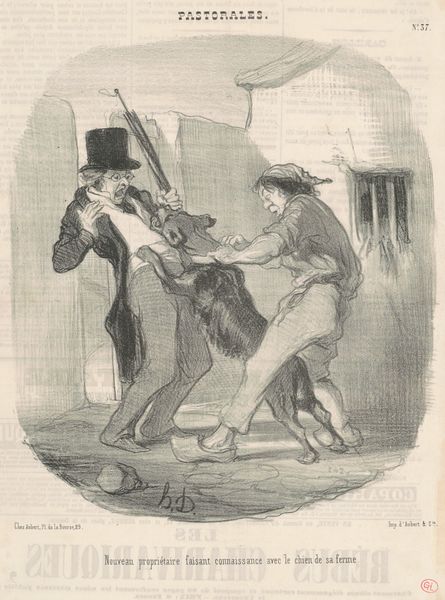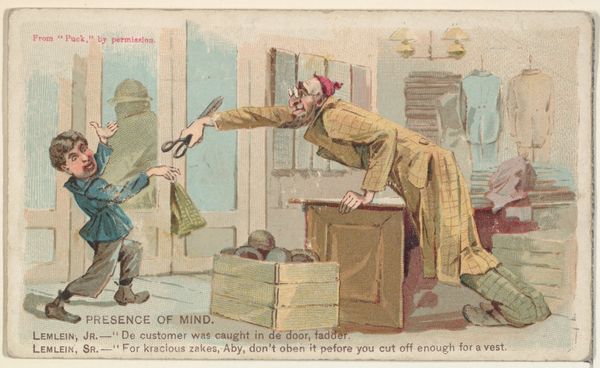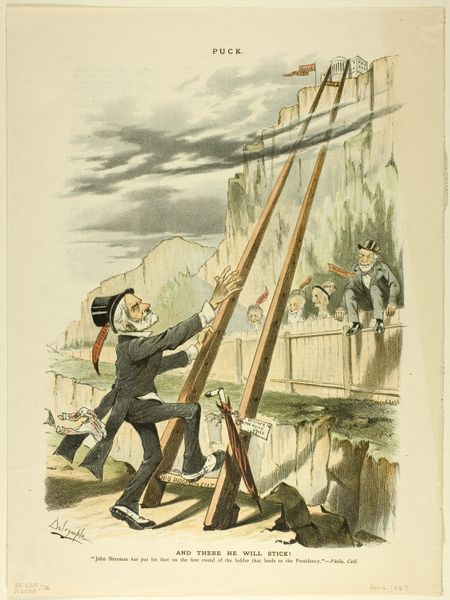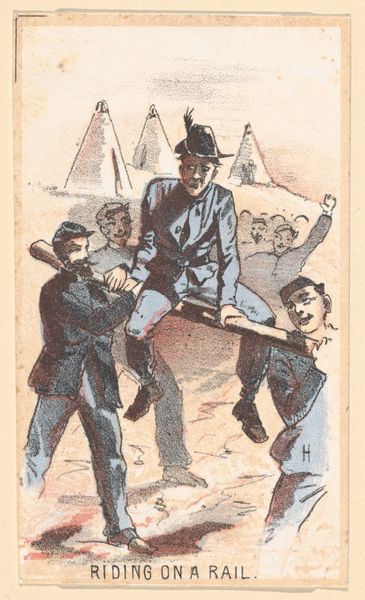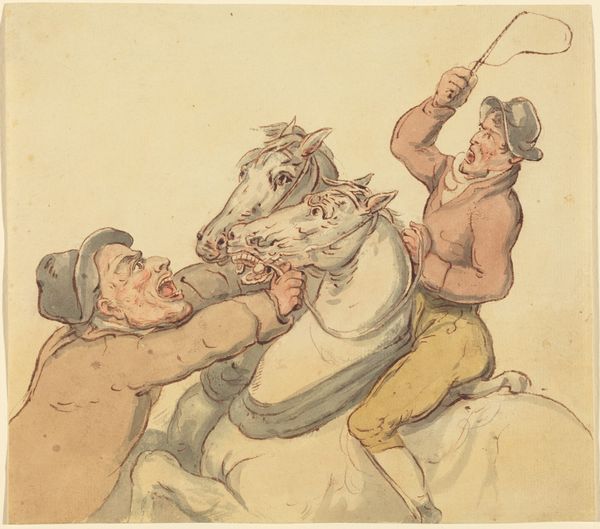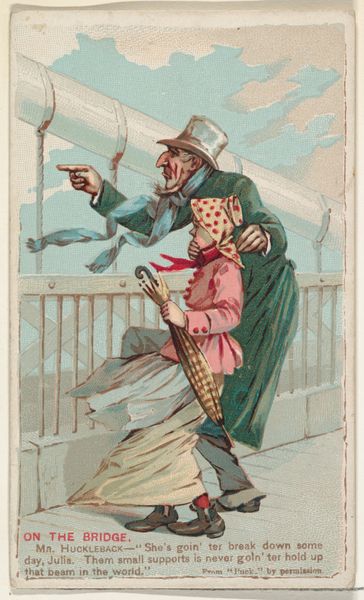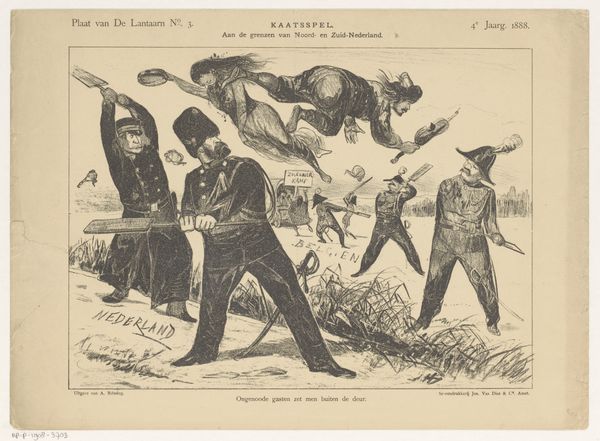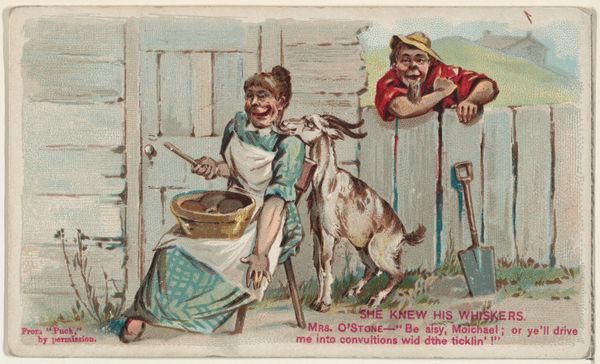
Sport on the Lots, from the Snapshots from "Puck" series (N128) issued by Duke Sons & Co. to promote Honest Long Cut Tobacco 1888
0:00
0:00
drawing, coloured-pencil, print
#
drawing
#
coloured-pencil
# print
#
caricature
#
coloured pencil
#
comic
#
men
#
genre-painting
#
watercolor
Dimensions: Sheet: 2 1/2 × 4 3/16 in. (6.4 × 10.6 cm)
Copyright: Public Domain
Editor: Here we have "Sport on the Lots," from the Snapshots from "Puck" series, created around 1888 by W. Duke, Sons & Co. It’s a color print that presents a rather peculiar scene with caricatured figures. I'm immediately struck by the odd blending of humans and animals – what's your interpretation of this piece? Curator: This lithograph offers us a window into the anxieties and humor of late 19th-century America, particularly regarding class and immigration. Consider how the Irish brogue is rendered phonetically in the caption: "Fwhat are yer doin' Jerry?". This caricature, while humorous, leans heavily into ethnic stereotypes, depicting Irish immigrants as rural, foolish, and perhaps even bestial. Notice how their bodies are literally fused with goats. What commentary might the artist be making about belonging, or perhaps, exclusion? Editor: So, the humor is actually… exclusionary? The physical merging of man and animal suggests a loss of identity, or perhaps a statement on how these immigrants were viewed by dominant social groups? Curator: Exactly. And it was used as a promotional item by a tobacco company. That context is crucial, isn't it? The print, seemingly innocuous, is actively shaping and reinforcing societal prejudices to sell its product. The stereotypes become normalized, and the systemic inequality, justified. What does this say about art's role in propagating such biases? Editor: It's unsettling to realize something seemingly light-hearted could be complicit in deeper social issues. I always thought of art from this period as simple and quaint, but I now see there are underlying narratives I was missing. Curator: Precisely. By interrogating art like this, by digging beneath the surface, we uncover the complex relationships between art, power, and identity. Editor: I'll certainly look at these types of works with a more critical eye moving forward. Thank you!
Comments
No comments
Be the first to comment and join the conversation on the ultimate creative platform.
